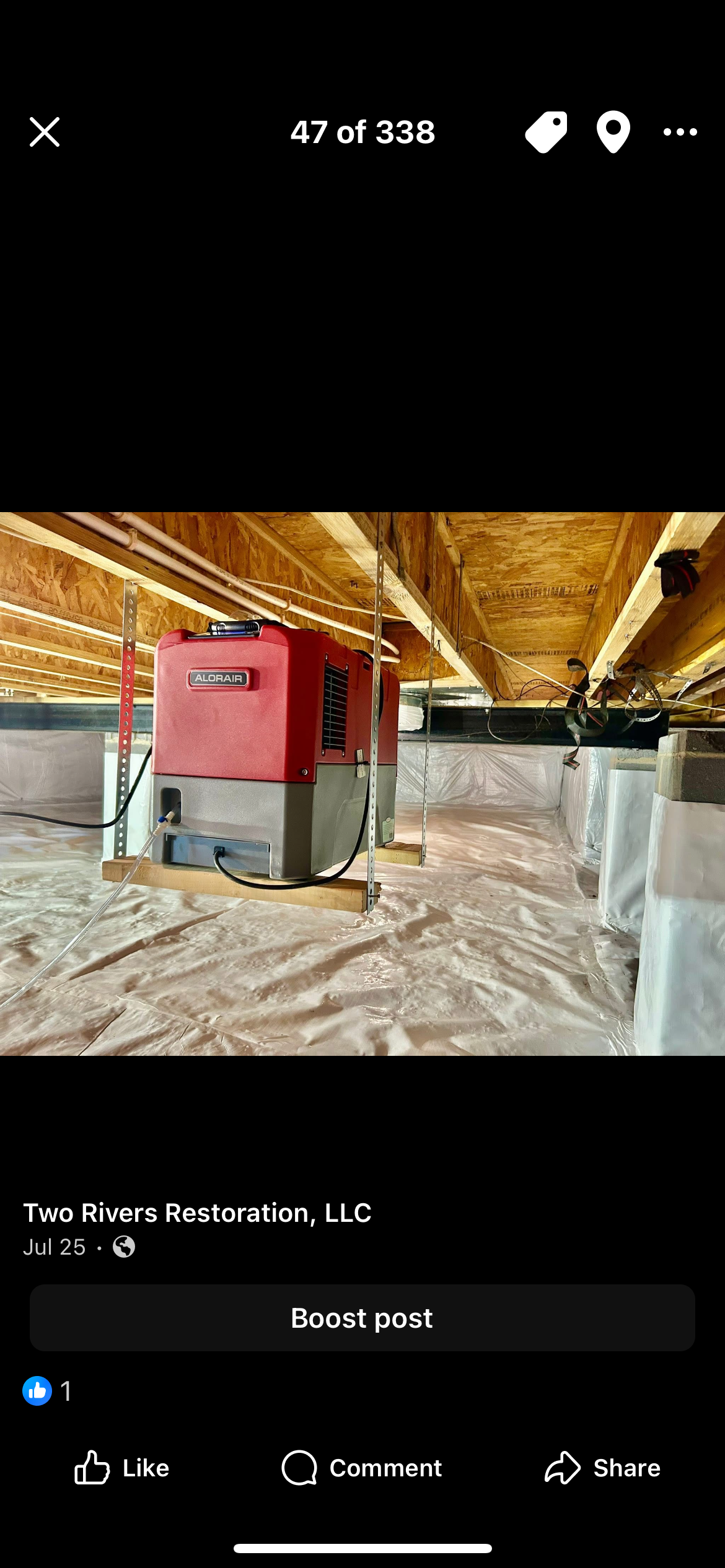OUR SERVICES
-

WATER
in a crawl space is a sign of a moisture problem, most often caused by hydrostatic pressure from high groundwater, surface runoff from improper drainage, or plumbing leaks. Addressing water intrusion is critical because it leads to mold growth, wood rot, pest infestations (like termites), poor indoor air quality, structural damage, and increased energy costs for your home. Solutions involve managing exterior drainage, improving interior drainage and waterproofing, installing vapor barriers, and potentially encapsulating the space to create a conditioned environment.
-

MOLD
in a crawl space is a fungus that thrives in dark, damp conditions, feeding on organic materials like wood and insulation. Common causes include high humidity, poor ventilation, and water intrusion from leaks or inadequate drainage, creating an ideal environment for spores to grow into visible patches of black, green, or white mold. This mold can be identified by a musty odor and can spread throughout your home, impacting indoor air quality and potentially causing health issues, such as allergies or asthma, and structural damage.
-
DEHUMIDIFIER
A crawl space dehumidifier removes moisture from the air, reducing humidity, preventing mold and mildew growth, and improving indoor air quality.
-

SUMP PUMP
A crawl space sump pump removes excess standing water from the lowest point of the crawl space, preventing floods and water damage.
-

DRAIN TILE
A drain tile for a crawl space is a sub-floor drainage system consisting of perforated pipes and gravel, installed around the foundation's perimeter to collect and redirect groundwater away from the home. The system protects against water damage, mold, and foundation issues by preventing water from accumulating in the crawl space. Water enters the perforated pipes, flows through the gravel, and is typically sent to a sump pump for removal.
-

ENCAPSULATION
Crawl space encapsulation is a process of sealing a crawl space with a waterproof vapor barrier and insulating the walls to create a clean, dry, and energy-efficient environment, protecting the home from moisture, mold, pests, and reducing energy costs. This method prevents moisture from the ground from entering the space and controls humidity, often requiring a dehumidifier, sump pump, and potentially a drainage system to maintain desired conditions.
